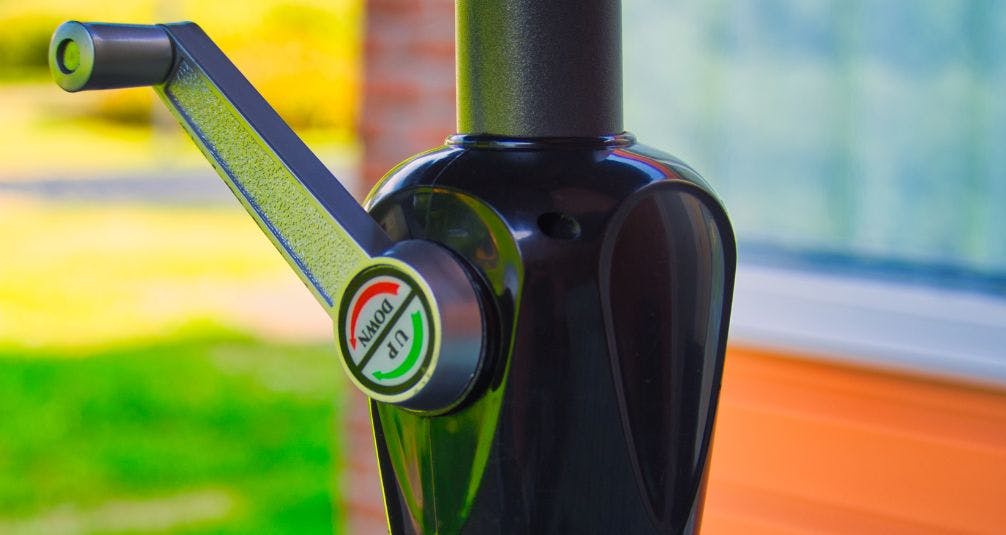Maintaining your Parasol

Unless your parasol is always closed, sheltered or covered, it is natural that exposure to the sun, moisture, wind and even dirt will lessen its durability. However, there are recommendations you can follow to properly care for your parasol.
1. Your parasol will stay in better shape for a longer period of time and will be much less likely to crack or fall over if you keep it closed and securely tied when it's not in use. We recommend a parasol covers to provide extra longevity.
2. You should never leave your parasol outside during the winter if not in use. If you do, you run the risk of it being weather damaged by rain, wind or snow. If using the parasol on winter days, allow it to air properly and dry completely. Only then, put on the protective cover. It is also important to note that the type of fabric will influence resistance to the weather.
3. Although stainless steel products are designed for outdoor use, they are subject to corrosion. To protect them it is recommended to keep them clean. First, remove dirt with a damp cloth and then wipe with a dry one. Subsequently, apply treatment products for stainless steel.
4. To avoid the appearance of mould stains, make sure that the parasol is properly dry when closing it. The presence of moisture gives rise to mould and, as a consequence, it can stain the fabric. It is extremely important to remember that you should never keep fabrics rolled/folded for long periods if they’re wet. Let them dry completely before closing the parasol.
5. Whenever possible, clean the fabric with a soft and dry brush. Removing the presence of insects, as well as dirt from birds and foliage, prevents deterioration.
6. To remove stains, use warm soapy water and a soft brush. Then rinse the fabric with water and let it dry.
7. When opening, closing and adjusting the parasol, do it over a wide area, to prevent it from getting caught in any structures. When closed, keep in mind that the fabric panels must face outwards to avoid damage caused by the rods. On days with higher wind, the recommendation is to keep it closed and secured.

Opening your Parasol
Opening a parasol usually involves operating a crank or pushing upwards and should only take approximately 30 seconds.
Crank Parasol
Check that the parasol pole is firmly anchored in a weighted base. When opening the parasol, make sure to pull the ribs and fabric out before using the crank. If there is resistance on the parasol opening, make sure the fabric or ribs are not caught. You can then wind the crank until the fabric has become taut and it will stay in place until you choose to wind it down to close. Once it has clicked into position, it is secure and ready to use.
Pulley & Locking Pin Parasol
Check that the parasol pole is firmly anchored in a weighted base. Gently pull the ribs of the parasol outward, away from the pole if it is not equipped with a crank. Push the umbrella rim up the pole slowly so the ribs begin to extend outward and the parasol’s fabric becomes taut. If there is resistance on the parasol opening, make sure the fabric or ribs are not caught. Once it is in position and secured with the locked pin, it is ready to use.















